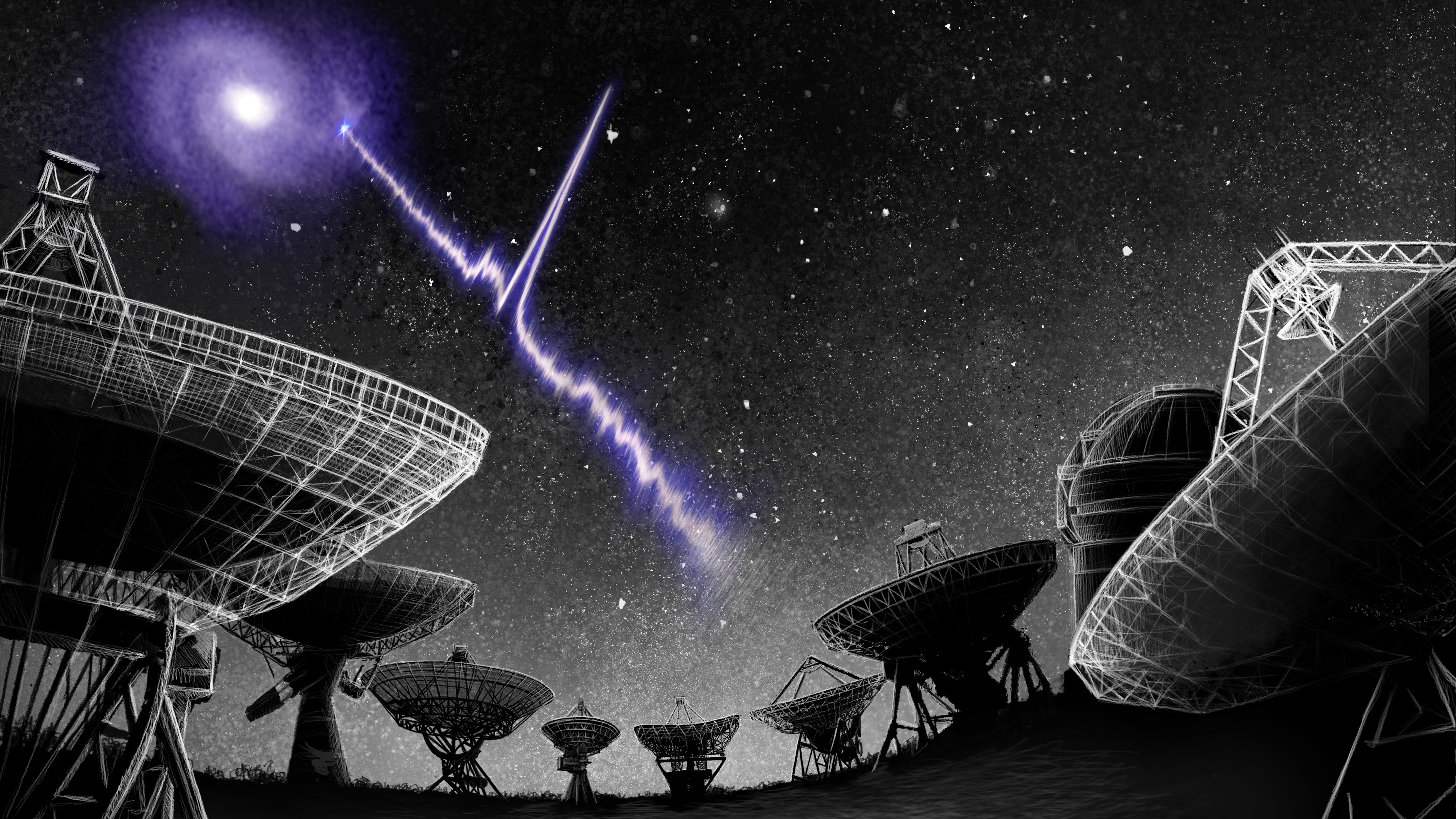by Benito Marcote (Joint Institute for VLBI ERIC (JIVE))

Fast Radio Bursts (FRBs) are bright and brief (only lasting milliseconds or less) flashes of radio light of unclear nature and cosmological origin. Firstly discovered in 2007, we have now detected hundreds of FRBs. Among those, only a small fraction are known to repeat, although it still remains unclear if there are different types of FRBs or all belong to the same population.
While hundreds of FRBs have been discovered to date, the nature of these bursts remain unclear, and only a handful of them have been localised with enough precision to reveal their host galaxies. The European VLBI Network (EVN) has demonstrated to be the only facility to pinpoint FRBs to milliarcsecond precision. Such resolution is key to not only reveal the host galaxy but to unveil their local environments, allowing us to understand the physical conditions where FRBs can be produced.
The radio observations from the EVN provide a milliarcsecond-precision position for the place where FRBs occur, and a high-resolution image of persistent radio sources that could be associated to the FRB. Then, optical observations (both high-resolution imaging and spectroscopy) are required to unveil the nature of the host galaxy and the properties of the environment around the FRB. This is achieved typically via Gemini or HST observations once the position of the bursts is obtained.
These studies led to the first ever localisation of a FRB, which was also the first known repeating FRB, 20121102A. This localisation revealed a surprising scenario: FRB 20121102A was associated with a compact (<0.7 pc in size) radio source located inside a star-forming region of a low-metallicity dwarf galaxy (Chatterjee et al. 2017; Marcote et al. 2017; Tendulkar et al. 2017; Bassa et al. 2017). While we do not fully understand the nature of this source, possible interpretations assume a very young super-luminous supernova or a massive black hole.
Further localisations revealed a FRB, 20180916B, just outside the edge of a prominent star-forming region in a spiral galaxy (Marcote et al. 2020; Tendulkar et al. 2021), and FRB 20201124A also in a star-forming galaxy (Nimmo et al. 2022). Therefore, repeating FRBs seemed to originate in or around very young environments after these localisations. However, recently we found FRB 20200120E in a radically different environment: inside a globular cluster associated to the M81 galaxy (Kirsten et al. 2022). While most FRB models predicted very young objects, the presence of this FRB inside a globular cluster challenges most of these scenarios.
These results are part of the Pinpointing REpeating ChIme Sources with EVN dishes (PRECISE) and AstroFlash projects focused on the monitoring of repeating FRBs to localise them with milliarcsecond accuracy.
 Benito Marcote is staff Support Scientist of the EVN at JIVE (The Netherlands). His main research activities are focused on the radio studies of transient sources. In particular, Fast Radio Bursts, Galactic high-energy binaries, and follow-up of GRB or gravitational-wave event afterglows.
Benito Marcote is staff Support Scientist of the EVN at JIVE (The Netherlands). His main research activities are focused on the radio studies of transient sources. In particular, Fast Radio Bursts, Galactic high-energy binaries, and follow-up of GRB or gravitational-wave event afterglows.